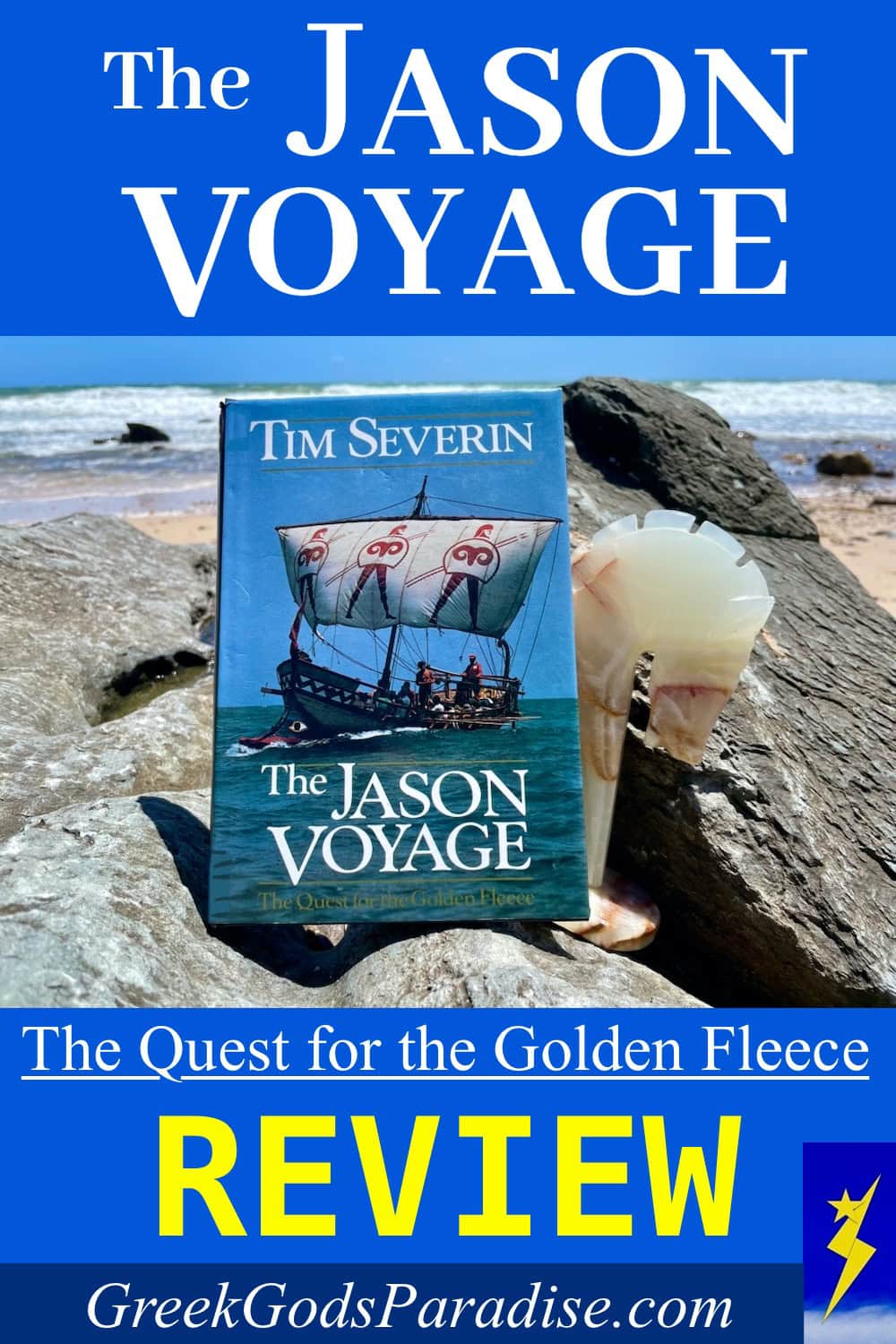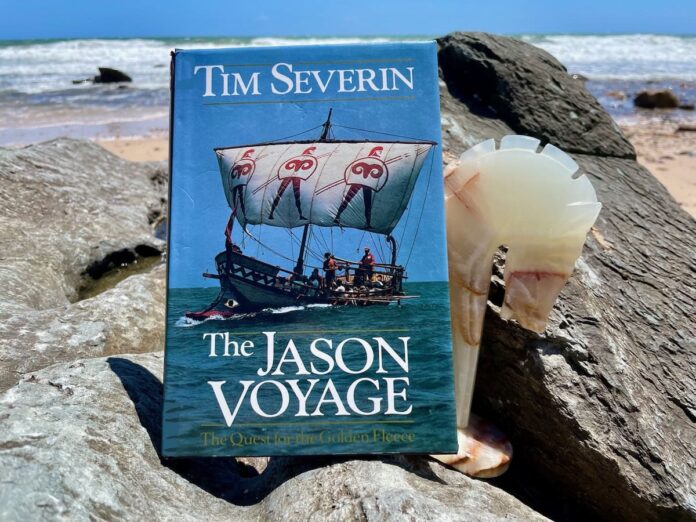Tim Severin sought to uncover the truth behind the legendary Greek myth of Jason and the Golden Fleece, or perhaps he simply wanted to create his own tribute to the myth of Jason and the Argonauts. To achieve this, he embarked on “The Jason Voyage” — a journey to determine whether a ship similar to the Argo could transport a crew from Greece to Georgia.
If successful, his expedition would help illuminate whether the story of Jason and the Golden Fleece is rooted in myth or reality. In this review of “The Jason Voyage,” we will explore Tim Severin’s astonishing voyage and his remarkable achievements.
Historically, the tale is said to begin in the thirteenth century BC. Jason, the heroic figure, goes on a grand adventure aboard the Argo, a magnificent ship crafted by its builder who also gave his name to it. Accompanied by a courageous crew known as the Argonauts, Jason set sail in pursuit of the elusive Golden Fleece — a quest shrouded in mystery.
Think of “The Jason Voyage” as a concept similar to the MythBusters TV show. Not only was there a book, but there is also a film about “The Jason Voyage.” What truths lie hidden within this adventure? Their epic voyage spanned modern-day Greece (1984), navigating the shimmering Aegean Sea, slipping through the Dardanelles and the Sea of Marmara, and traversing the treacherous Bosphorus into the enchanting Black Sea. The journey carried them along the rugged northern coast of Turkey, ultimately leading to the legendary land of Colchis, in what is now Georgia.
Here, amidst tales of magic and valor, Jason sought not only the dazzling treasure of the Golden Fleece but also encountered the mesmerizing sorceress, Medea. His journey across the treacherous seas was fraught with peril, but it was on land that he truly forged his destiny. Jason bravely subdued ferocious bulls, triumphed over a merciless serpent, and sowed the very teeth of that beast into the soil, birthing an army of fearsome warriors from the earth itself — one of the most memorable scenes in the Jason and the Argonauts (1963) film.
THE JASON VOYAGE: REVIEW
Enter Tim Severin, a modern-day adventurer with a penchant for testing the boundaries of lore. Having previously traced the mythical path of St. Brendan from Ireland to America, and transformed the fantastical adventures of Sindbad into a colossal journey from Arabia to China, Severin felt compelled to delve into the saga of Jason.
The Jason Voyage essentially began when Tim Severin commissioned a twenty-oar galley, reconstructed to the specifications of a Bronze Age craft, and assembled a crew of daring souls — a new band of Argonauts.
Tom Vosmer was a genius at making models, and he was the one who came up with the construction model of the Argo. In the picture below, Tim Severin is seen holding the miniature model of the Argo while Tom Vosmer talks to him about the ship. One of the great features of ‘The Jason Voyage’ is its abundance of beautiful images.
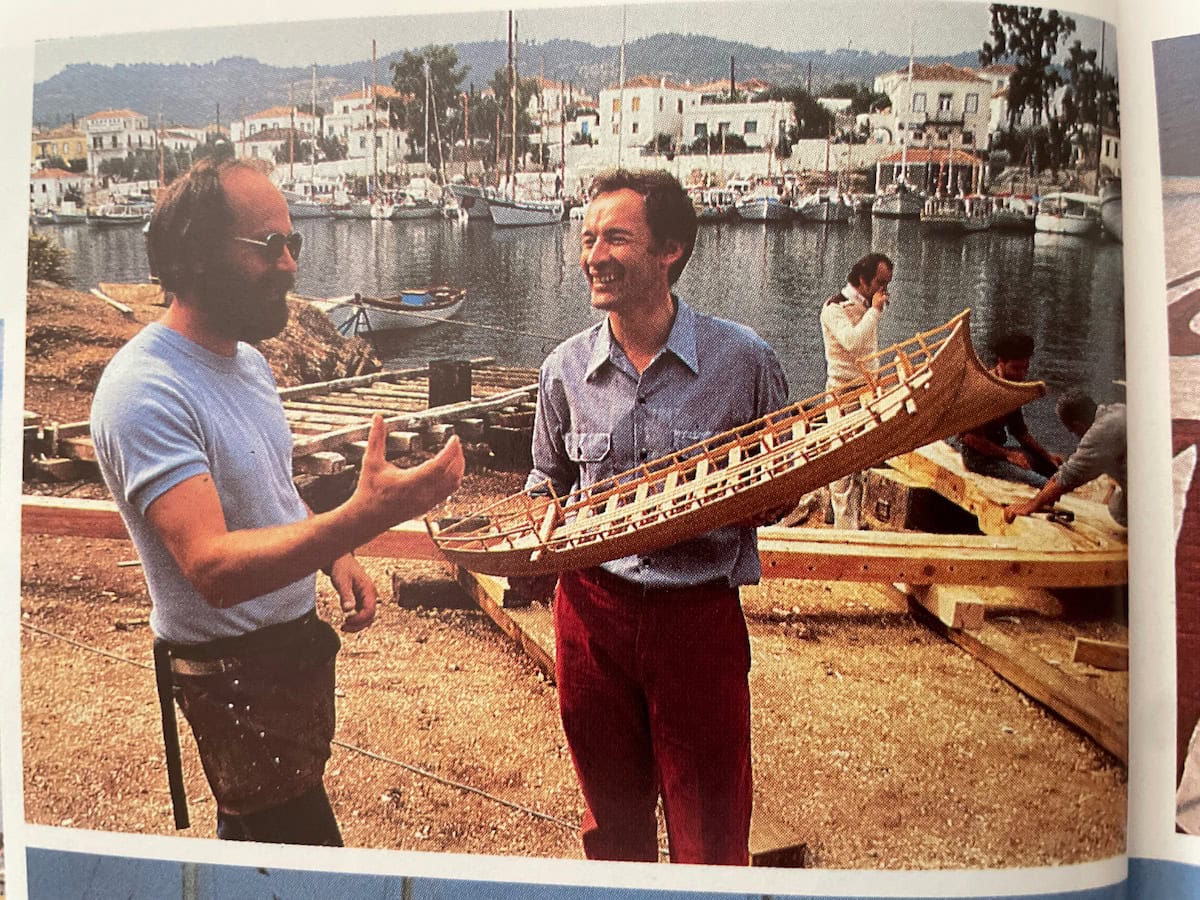
Together, they courageously embarked on a daunting 1500-mile expedition, aided by intrepid volunteers from Greece, Turkey, and even the shadows of the former Soviet Union, as they navigated the intricacies of each nation’s waters. Their journey was fraught with challenges and discomfort, yet they persevered, unveiling the remarkable possibility that Jason could indeed have completed this perilous quest in an oar-driven galley — something many experts had deemed impossible.
The Jason Voyage promises to transport readers into a world of thrilling adventure, blending history, mystery, and the spirit of exploration. Whether you are a scholar scouring for truth or an adventurer yearning for the allure of the unknown, this tale is one that beckons you to embark on an extraordinary journey through time.

Track of the Argo: Map of The Jason Voyage
In Tim Severin’s fascinating book, “The Jason Voyage,” readers are treated to a detailed map illustrating the legendary sea route of the Argo as it journeyed from Greece to Georgia. The intrepid crew, known as the New Argonauts, embarked on this remarkable expedition from Volos in Greece, covering approximately 1,500 nautical miles.
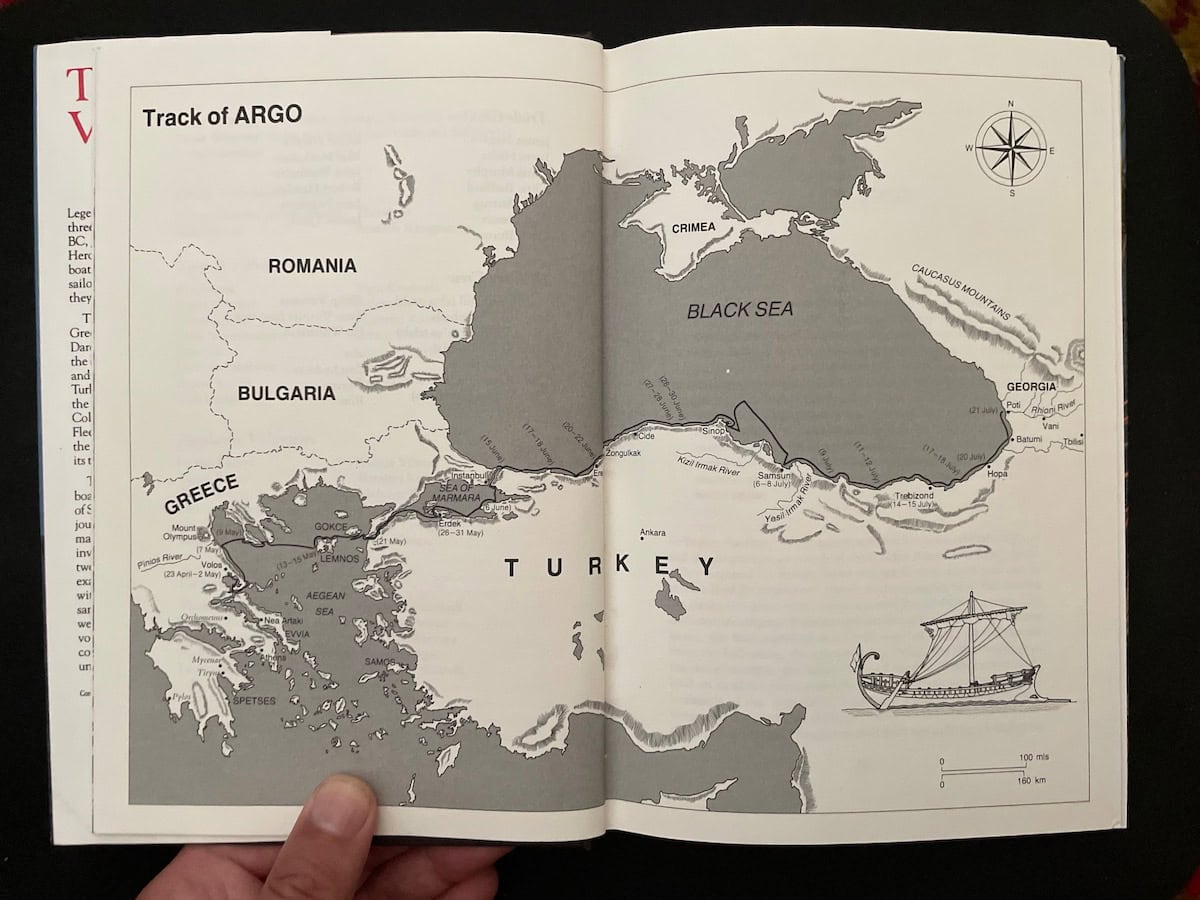
The Jason Voyage Crew
The Argo’s team was a diverse and dedicated group, comprising not only the core voyage crew but also enthusiastic Greek volunteers, including Costas Ficardos, Elias Psareas, Theodore, and Antonis Karagiannis, alongside Turkish, Bosphorus, and Georgian volunteers.
Additionally, the expedition included specialized Trials and Delivery crews, all united in their quest to retrace the legendary path of one of mythology’s most famous ships.
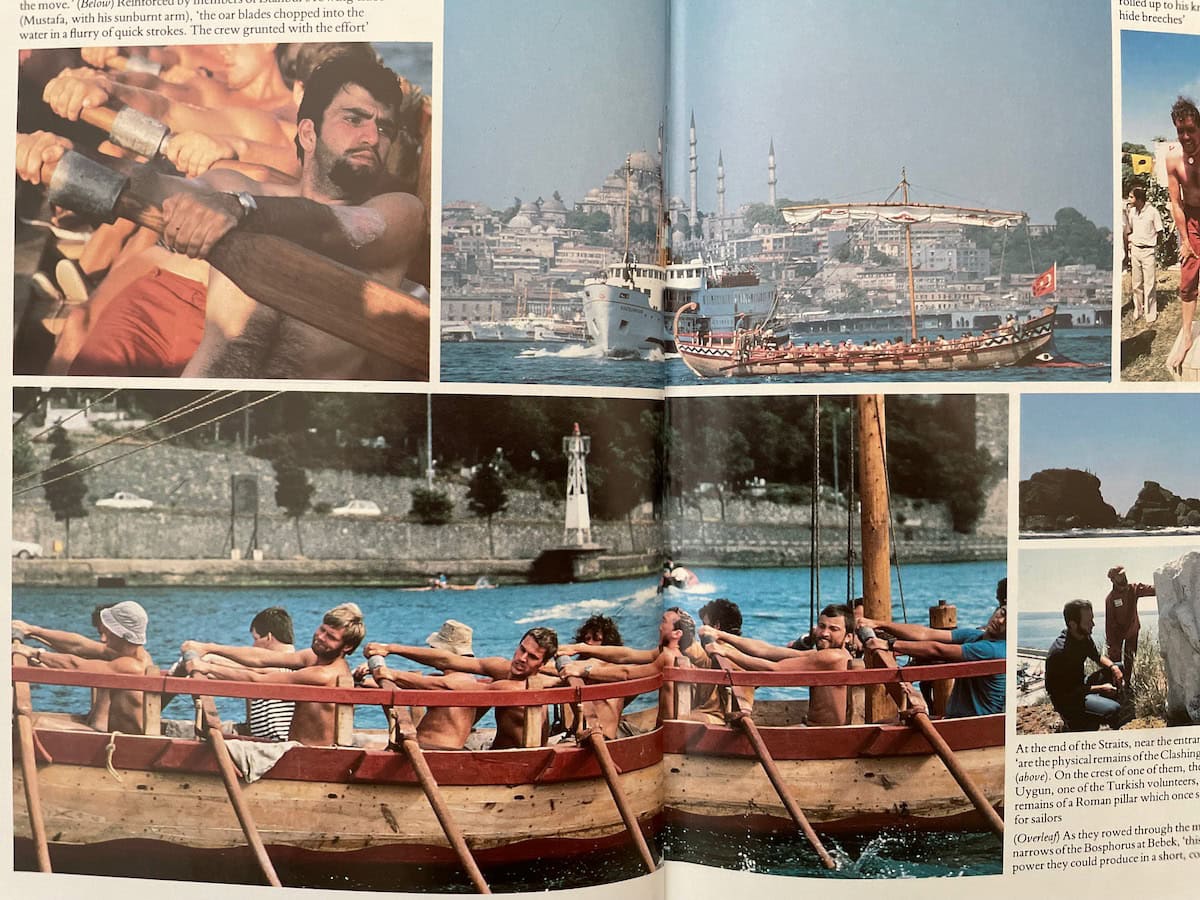
In the image below, a vibrant array of Turkish fishing boats cluster around the majestic Argo as it sails into port, their white hulls contrasting brilliantly against the shimmering azure waters.

The arrival of the Argo, a vessel steeped in legend and adventure, truly sparked the admiration of countless sea lovers and explorers alike. This modern ship, reminiscent of ancient myths, embodied the enduring spirit of discovery that has captivated seafarers for centuries. Enthusiasts and onlookers alike would have been filled with excitement at the sight of this mythic ship, a tangible link to the tales of old.
The Jason Voyage stands as a grand chapter in the ongoing saga of exploration, awakening the deep-seated wanderlust in all who are fortunate enough to witness this extraordinary journey, even if only through the written word.
Each account of “The Jason Voyage” invites readers to share in the thrill of discovery, igniting imaginations and stirring dreams of adventures waiting just beyond the horizon. In the presence of the Argo, the age-old call of the sea resonates anew, reminding us all of the timeless allure of exploration and the stories yet to be told.
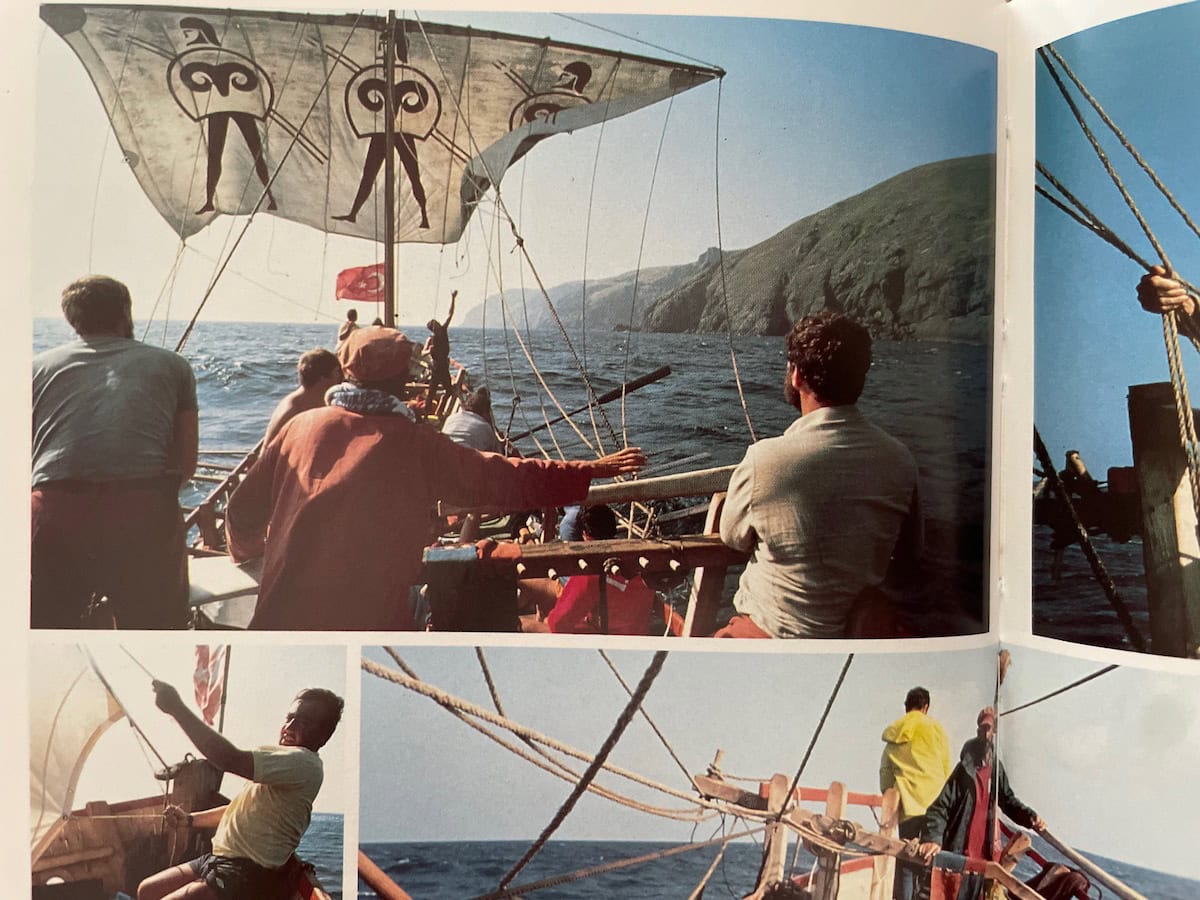
The Jason Voyage: Arriving in Georgia
In “The Jason Voyage,” Tim Severin embarks on an extraordinary expedition that weaves together the threads of myth and the indomitable spirit of adventure. As he and his crew traverse the azure waters of the Aegean Sea, they meticulously retrace the fabled journey of Jason and the Argonauts in their quest for the legendary Golden Fleece.
Their odyssey eventually takes an exhilarating turn as they steer toward the shores of Georgia — a moment steeped in historical significance and modern wonder. Upon their arrival, the crew is met with breathtaking landscapes that evoke the ancient tales of the Colchis region, where Jason was said to have bravely claimed the Golden Fleece.
Throngs of eager spectators gathered to catch a glimpse of the newly crafted Argo ship and its intrepid crew, celebrating a timeless connection between past legends and present-day adventure.

Tim Severin’s vivid narrative transforms the experience into a poignant reminder of the enduring allure of mythic quests — a reminder that, much like Jason, every traveler embarks on their own adventure in search of treasure, both material and spiritual.
About Tim Severin: Author of The Jason Voyage
Timothy Severin was a renowned British adventurer, historian, and author. He gained recognition for his ambitious projects that involved following in the footsteps of legendary explorers from myth and history.
He was born in 1940 as Giles Timothy Watkins to Maurice and Inge Watkins in Jorhat, Assam, India, where his father oversaw a tea plantation. At the age of seven, he moved to England for his education, attending Tonbridge School before pursuing geography and history at Keble College, Oxford.
In a tribute to his maternal grandmother, who played a significant role in his upbringing, he chose to go by the name Severin. Throughout his life, Severin experienced two marriages; his first spouse, Dorothy Sherman, was an expert in medieval Spanish literature, but their union eventually ended in divorce. He later wed Dee Pieters. Severin passed away on December 18, 2020, at the age of 80, in his home located in Timoleague, West Cork, Ireland. Tim had a daughter, Ida Ashworth, from his first marriage, as well as two grandsons.
Throughout his extraordinary life, Severin embarked on a multitude of thrilling adventures.
The Marco Polo Journey (1961)
Tim Severin’s first epic journey took place during his undergraduate years at Oxford University, when he embarked on an adventurous expedition with Stanley Johnson and Michael de Larrabeiti. Together, they followed in the footsteps of Marco Polo, retracing his 13th-century travels across Asia.
Utilizing Polo’s work, The Description of the World, as their reference, the trio set off from Oxford, journeying through Switzerland to reach Venice, and then onward to Turkey, Persia, and Afghanistan. Along the way, they faced numerous challenges including sandstorms, floods, motorcycle mishaps, and even some time in confinement.
In a quest for the legendary “apples of Paradise,” Severin and his companions rode camels across the Deh Bakri pass, searching for the elusive hot springs mentioned by Polo. Unfortunately, they were thwarted in their attempt to complete the journey due to visa issues at the Chinese border, ultimately making their return to England by sea from Bombay.
The Jason Voyage (1984): The Quest for the Golden Fleece
The legendary tale of the Argonautica, originally documented by Apollonius of Rhodes in late 3rd century BC Alexandria, served as inspiration for Severin’s subsequent adventure. In 1981, he delved into research on ancient Greek maritime vessels and analyzed the narrative in detail.
Skilled shipbuilder Vasilis Delimitros from Spetses meticulously crafted a 54-foot (16.5 m) replica of a Bronze Age galley, drawing from a scale model of the Argo. In 1984, accompanied by twenty volunteer oarsmen, Severin embarked on a remarkable journey, rowing and sailing from northern Greece through the Dardanelles, navigating the Sea of Marmara, and traversing the Straits of Bosphorus into the Black Sea, ultimately arriving at the Phasis delta in what was then Soviet Georgia — a distance of 1,500 miles (2,400 km).
During their odyssey, they pinpointed several landmarks associated with Jason and the Argonauts and uncovered a possible rationale behind the myth of the Golden Fleece. Severin documented this remarkable expedition in his work, The Jason Voyage, published in 1985.
The Ulysses Voyage (1985): Based on The Odyssey
Once more harnessing the spirit of the Argo from his earlier work, in 1985 Severin retraced the journey of Ulysses as depicted in The Odyssey, traveling from Troy to Ithaca in the Ionian archipelago.
Throughout this expedition, he tentatively or definitively identified several significant locations from the epic, including the land of the Lotus-eaters, the palace of King Nestor, the Halls of Hades, the treacherous Roving Rocks, as well as the infamous monsters Scylla and Charybdis, and the alluring sirens.
His adventures and meticulous historical research culminated in The Ulysses Voyage, published in 1987, which chronicles both the voyage itself and the fascinating discoveries made by Severin and his crew along the way.
Tim Severin: Awards and Achievements
Severin chronicled his adventures in many books that garnered numerous accolades, including the Thomas Cook Travel Book Award, The Book Of The Sea Award, a Christopher Prize, and the literary medal from the Academie de la Marine. He was also a frequent contributor to National Geographic Magazine.
His expeditions were immortalized through documentary films that wowed viewers with adventure and exploration. These films received accolades at various festivals for categories such as Best Cameraman, Best Sea Film, and Best Adventure Film. Compiled under the title TIME TRAVELLER, they aired on networks like Discovery Channel, Sky Television, and National Geographic TV.
In January 2005, he launched VIKING, Odinn’s Child, the first installment of a historical fiction trilogy published by Macmillan. This book quickly entered the bestseller lists, followed by VIKING, Sworn Brother, and VIKING King’s Man.
Tim Severin has also authored captivating works about pirates and Saxons, showcasing his diverse range of interests.
Tim Severin Books: Voyages and Expeditions
Tim Severin was a prolific author and here you see three of his books including The Sinbad Voyage, The Jason Voyage, and The Ulysses Voyage. It’s interesting to note that The Ulysses Voyage was crafted after The Jason Voyage, utilizing the same ship for its adventurous journey.
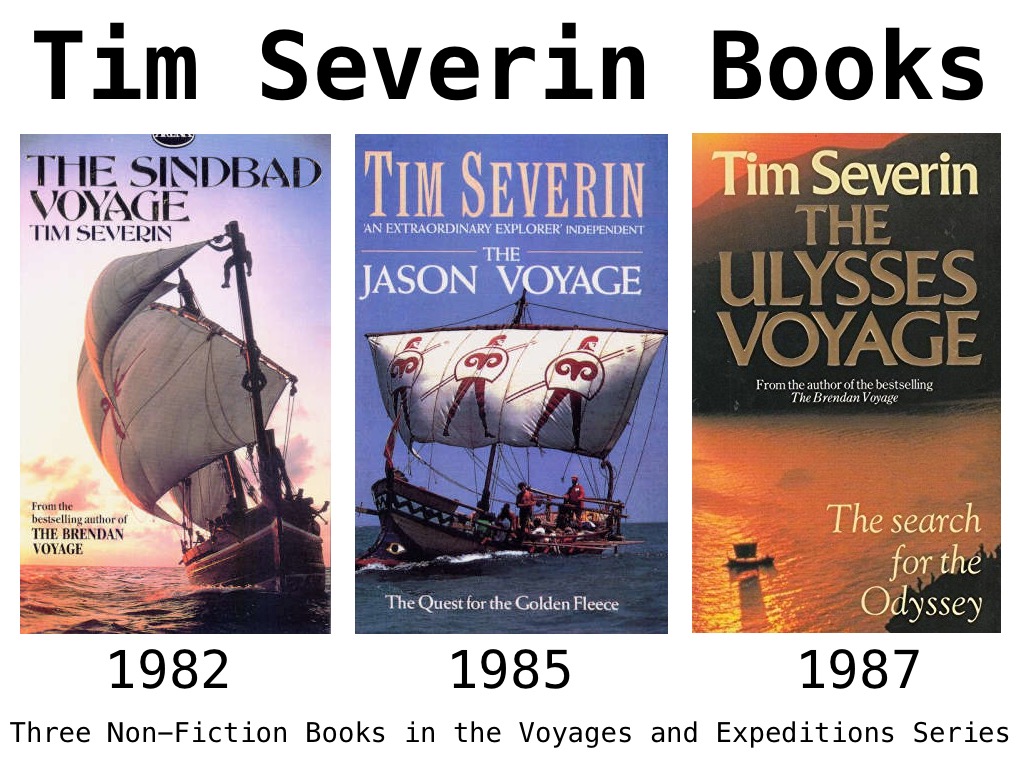
You can find more Tim Severin’s books here, where the British explorer and historian vividly brings to life a variety of adventures, including those of Vikings and pirates.
Check Availability and Pricing
The Jason Voyage: The Quest for the Golden Fleece
The Ulysses Journey: Sea Search for the Odyssey
The Jason Voyage Film: Voyage of the Heroes
Another way of venturing into the adventurous world of “The Jason Voyage” is by watching the documentary. This film, while often dismissed due to its aged footage and dated visuals, is a hidden gem in the realm of cinematic adventure and storytelling. The narrative brings to life a tale of heroism, camaraderie, and self-discovery, set against a backdrop that blends the mythical with the real.

If you’re curious and willing to dig deeper, you might just find this interesting film with a little luck. Try searching on YouTube for “Voyage of the Heroes TV show.” There, you might stumble upon not only “The Jason Voyage” but also additional treasures — behind-the-scenes footage, fan discussions, and perhaps even remastered clips that breathe new life into this classic.
While “The Jason Voyage: Voyage of the Heroes” would never rank among the best Greek mythology movies of all time, it offers a unique glimpse into real-life myth making. This film has its own special charm, so it’s deserving of your attention.
The Jason Voyage: Unraveling Truth, Myth, and Historical Facts
The Jason Voyage is a non-fiction book based on a real-world experience, nothing like the typical Jason and the Golden Fleece graphic novel tales that children read. Instead, it presents a riveting exploration of the fabled journey of Jason, intertwining fact and fiction through the lens of myth and history. This narrative delves into the rich tapestry of ancient Greek lore, examining the historical context surrounding the Argonauts and their perilous quest for the fabled Golden Fleece.
In the heart of the narrative lies an expedition that transcends the boundaries of mere storytelling. Through meticulous research and captivating prose, the author transports readers to the windswept shores of Colchis, where the mighty Aegean tides cradled heroes and monsters alike. As we accompany Jason on his treacherous journey, we encounter formidable adversaries, such as the fire-breathing bulls and the deadly Harpies, questioning how much of these encounters stemmed from the collective imagination of a civilization steeped in myth.
Yet, the Jason Voyage doesn’t shy away from revealing the possible historical truths underlying these myths. What if the Golden Fleece was not just a symbol of ultimate conquest but a representation of the myriad challenges faced in uncharted territories? The author skillfully blurs the lines between mythological grandeur and historical realities, illuminating ancient seafaring practices, natural wonders, and the rich cultural exchanges that characterized the age.
As mysteries unravel, the reader finds themselves on an odyssey filled with intrigue, echoing echoes of humanity’s quest for understanding and adventure. Through ancient texts and archaeological marvels, The Jason Voyage invites us to reevaluate the narratives that define our history, reminding us that every legend has its roots in reality — a truth waiting to be unearthed.
If you’re interested in exploring the best books about Greek mythology and Gods, be sure to check out these classic selections too.
Pin it … Share it
